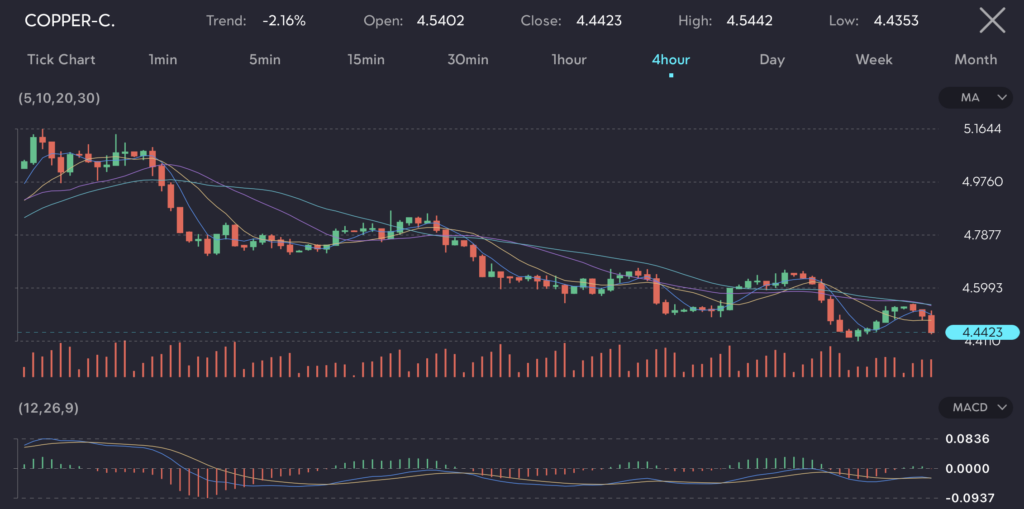Key points:
- Most base metals fell on Tuesday due to a weaker Chinese yuan (CNY) and high physical inventories.
- Copper fell 0.5% to $4.47 per pound.
- High inventories and weak demand continued to pressure base metal prices.
Base metals experienced declines on Tuesday, driven by a combination of a weaker Chinese yuan (CNY) and high physical inventories.
The depreciation of Chinese yuan against the US dollar reaching its lowest in nearly seven months, reduced the purchasing power of Chinese buyers.
This, coupled with weak demand, exerted pressure on metals like copper. As a result, copper prices (Symbol: COPPER-C) fell 0.5% to $4.47 per pound.

Picture: The decline of copper prices as observed on the VT Markets app.
Prices of zinc and lead followed the trend, while tin prices were nearly flat. Conversely, nickel prices rose.
Where is this all coming from
The weakening of the Chinese yuan has significant implications for the base metals market. A weaker Chinese yuan makes dollar-denominated commodities more expensive for Chinese buyers, which can reduce demand and put downward pressure on prices.
The current scenario mirrors the period post-2014 when the Chinese yuan devaluation led to a significant reduction in commodity purchases from China, impacting global prices.
Given the current market dynamics, further depreciation of the Chinese yuan could continue to pressure metal prices unless offset by a significant demand surge or supply constraints.
What traders should pay attention to in June
The base metal markets are likely to remain under pressure due to the strong US dollar and high physical inventory levels. Market participants should monitor currency movements and inventory data closely.
If the Chinese yuan continues to weaken and demand remains stagnant, prices could see further declines. However, any signs of tightening supply or policy measures to stimulate demand in China could provide some support to base metal prices.







